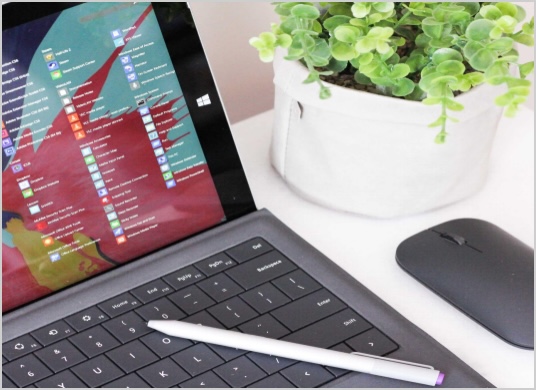Omnichannel Retail: Benefits and Best Practices

Today, customers expect to be able to seamlessly transition from browsing items on a desktop or mobile to picking them up in a store. The concept of omnichannel retail is changing the way we purchase and sell products and services by enabling a consistent experience across all channels used by a company. When implemented properly, it makes possible a seamless transition from a digital channel to a brick-and-mortar one and vice versa.
On average, brands that successfully master omnichannel retail can expect their clients to spend 4% more when shopping in physical stores and 10% more when shopping online, shows a study by Harvard Business Review. This is just one of the benefits, which also include improved customer loyalty, higher engagement rate, and satisfaction rate. In this article, we’ll look at the advantages that the adoption of omnichannel retail can bring to a company and the best practices of how businesses can use it to boost their performance and get ahead of the competition.
What is omnichannel retail?
Retailers who follow a single-channel approach exclusively run online or offline brick-and-mortar store(s). Such an approach allows one to keep expenses within a tight budget, focus on refining the shopping experience in the chosen channel costs and maintain a stable revenue stream.
However, the advancements of the digital era have demonstrated the constraints of a single-channel retail approach. Omnichannel retail, which means the simultaneous development of offline and online channels for sales and customer interactions by a company, has emerged as a response to customers’ demand to be able to choose a preferred channel among several and switch between them during various stages of their journey, from brand discovery to purchase itself.
Core benefits of omnichannel retail
Adopting an omnichannel approach can help retail businesses in many ways. From improving the shopping experience by giving customers a choice of channels for interacting with a brand and making a purchase to more comprehensive and insightful analytics for understating customer patterns and preferences. With all of this in place, omnichannel retail drives sales and profitability — which is the ultimate goal of any endeavor in the retail industry.
Customer retention boost
Customer retention defines the capacity of a business to make its clients buy regularly and keep them from going to direct competitors. By providing a consistent shopping experience across channels and eliminating barriers to making purchases via various scenarios, an omnichannel customer engagement strategy can help a company retain customers.
Omnichannel retail has become one of the main factors influencing in-store and online purchasing experiences. A study by Invespcro shows that, on average, companies with omnichannel customer engagement strategies manage to retain 89% of their customers, compared to 33% for companies with poor or no effort in omnichannel customer engagement.
Engaging customers where they are
The key to successful customer engagement is to meet them where they are. The recent COVID-19 pandemic has sped up the shift to e-commerce, while social media platforms have become new shopping venues, allowing brands to set up shops right within. Additionally, the customer journey has become less linear than ever, as people discover products and services through one channel (digital or physical) and make purchases via another one.
For brands, this means an increased importance of being present in the channels used and preferred by their customers, as this directly influences the convenience of shopping experience. A strong omnichannel retail strategy takes into consideration the changing consumer behavior and is equipped with the necessary technology and operations processes to fit shopping seamlessly into the lives of a brand’s audience.
Maximized CLTV
Customer lifetime value, or CLTV, shows how much money a company may expect to make from a single customer account throughout their interactions. With the help of omnichannel retail tactics, brands can streamline these interactions and make shopping and consultations more accessible and easier for various groups of shoppers. This directly affects the CLTV metric and increases the revenue level that can be achieved from relations with every single customer.
Comprehensive insights
Social media, websites, physical stores — all of these channels of brand-customer interactions have numerous tools that help accurately track visitors, and analyze what brought them to a physical or virtual store, their shopping patterns, and demographics. This way, companies that employ an omnichannel approach can get a holistic picture of their clientele and consequently use the data to refine the existing service or come up with new ones that are bound to be successful.
Best practices of omnichannel retail strategy

Now, with the previous chapter demonstrating the advantages that omnichannel retail brings to companies, it’s time to go from theory to practice and explore some of the ways a business can put the omnichannel approach to work.
Optimize website for a streamlined shopping experience
Numerous studies show that it takes only a couple of seconds for a website’s visitors to form an opinion on it and decide whether to keep browsing and proceed with a purchase or not. Thus, it is critical to devote an effort to make this vital moment produce a lasting positive impression.
For example, a website that fully loads more than 2 seconds will greatly increase the bounce rate — the percentage of visitors that leave without waiting for the site to load. Poor navigation, lack of search filters, and uninformative product cards — all of these aspects can potentially discourage clients from completing checkout.
Give the best online experience to your customers by getting rid of any deadlinks and making all essential info about shipping or payment easily accessible. Also, with more than 58% of all international traffic attributed to mobile devices, it is crucial to make your e-shop mobile-friendly and optimize every page for compact vertical screens.
Put artificial intelligence and automation to good use
With every new AI solution released or updated, robots get smarter. It’s no surprise that chatGPT attracts so much attention since the platform can provide tailored and personalized help with text, indistinguishable from humans. When a company embarks on an omnichannel journey, it is a big mistake to neglect the advantages a proper use of automation and bots can give.
For starters, chatbots can effectively communicate with customers in an online chat on a website if no human shopping advisor is available. Free live chat demonstrates some of the highest satisfaction rates among clients, surpassed only by phone, but what if a customer asks for advice in the middle of the night and the retailer doesn’t have the means to provide 24/7 assistance? A chatbot can effectively answer frequent questions, such as sizing advice, shipping info, or tracking details.
However, the usage of automation is beneficial even when live agents are at their desks. For example, smart analysis of an incoming customer inquiry can quickly allocate it to a relevant specialist, which works toward keeping both initial response and resolution times to a minimum.
Go omnichannel in communication
An omnichannel approach to retail can hardly work without an appropriate approach to marketing activity and customer communication. Create unique content that is informative and promotes important conversations across all channels used for selling. Along with sending special promotions in WhatsApp or publishing engaging posts on Instagram, for example, this includes reacting to user-generated materials as well. Aim to leave no comment without a reply and no story that features your product or mentions your brand without re-share.
Adopting omnichannel messaging is no easy task even for an established enterprise and experienced customer support departments. Here, omnichannel messaging platforms, such as Umnico, can prove invaluable in terms of streamlining all operations. Umnico combines conversation from all channels, including email, social media, messengers, and live chat, in a single web or mobile interface. This allows for convenient customer relations management, without the tiresome switching between interfaces or security risks associated with sales reps or CS agents contacting customers from their personal devices.
Make the data work
No effective omnichannel retail is possible without the basis of accurate statistics and analysis. Aim to collect data on the performance of every sales channel, including conversion, source (what ad brings customers to a store or a website), average sizes of purchases, their frequency and dependence on demographics, product categories, and so on. The same goes for marketing activity: monitor the effectiveness of every campaign and analyze what topics generate the highest amount of shares on social media. By doing all of the above you can be sure your omnichannel efforts go in the right direction, or make required adjustments early on.
Future of omnichannel retail
What we see today, how digital shops become the extensions of offline ones and real-life banners take customers to electronic checkouts, is exciting. However, things are likely to get even more exciting in the future, as digital and AI technologies advance, allowing retailers to provide customers with a more personalized experience, smarter shopping advice, and prompt post-purchase support.
It is impossible to accurately forecast what new possibilities such technologies as augmented reality and chatbots have in store for humanity (and avid shoppers in particular), but soon we will surely see the growing importance of social media and messengers in daily interactions between shops and their clients.
Here, integration, personalization, and two-way interactions are the three main pillars of effective customer communication. All of these elements can be perfected faster and easier with the help of robust modern software. With more than 25 integrations with social media, a sales funnel, and automation capabilities, Umnico is an omnichannel messaging platform that has everything small to medium-sized businesses need to champion the communication aspect of omnichannel retail. A free trial that every new user can enjoy makes the assessment of Umnico capabilities easy and exempt from any commitment.




























